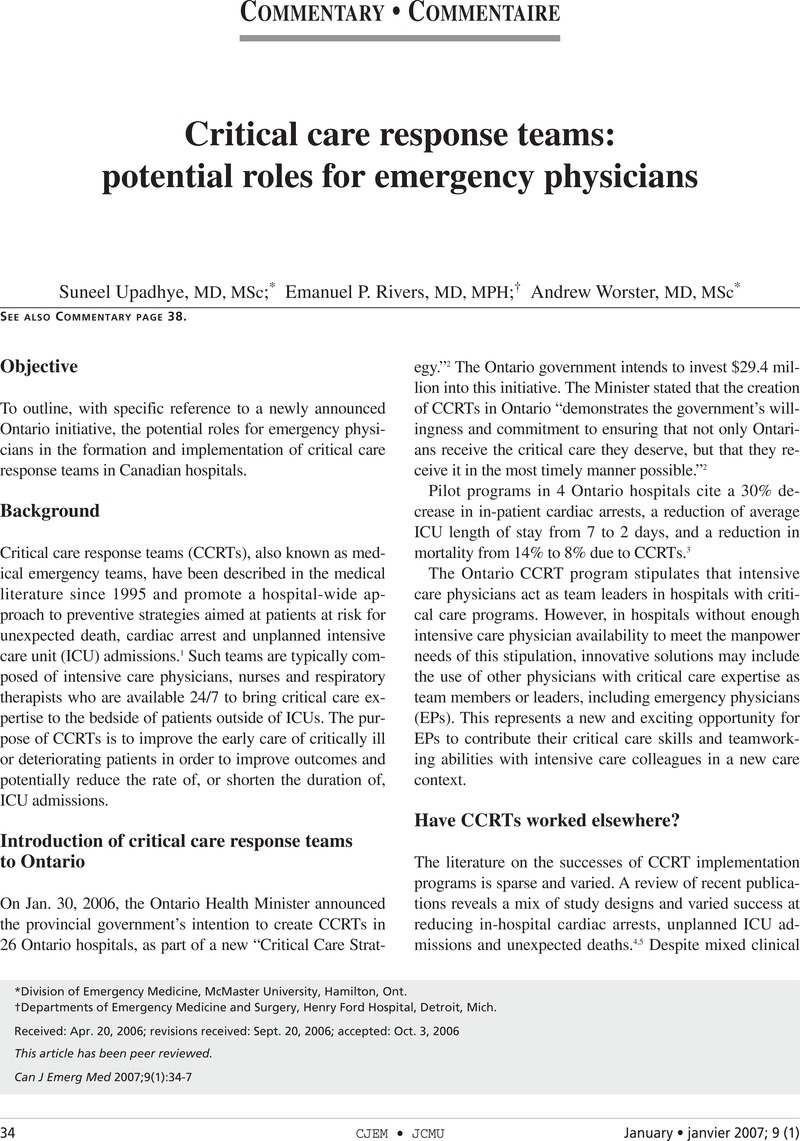Crossref Citations
This article has been cited by the following publications. This list is generated based on data provided by Crossref.
Ducharme, James
2007.
Critical care response teams: A step forward in patient care, or a step closer to an emergency physician manpower crisis?.
CJEM,
Vol. 9,
Issue. 01,
p.
38.





